Complete Solutions to CHEMISTRY of chapter JEE ADVANCED of Class 12 book with complete answers and questions
| Class 12 | CHEMISTRY |
| Chapter | JEE ADVANCED |
| JEE ADVANCED PREVIOUS YEAR | CHEMISTRY |
| Number Of Questions | 100 |
| Academic Year | 2023-24 |
Which of the following set represent correct formula for malachite, magnetite, Calamine & Cryolite ?
View SolutionFind the correct acidic strength order:
(i) `HC-=C-COOH" " (ii) H_(2)C=CH-COOH`
_CHM_E01_002_Q01.png) `" " (iv) CH_(3)-CH_(2)-COOH`
`" " (iv) CH_(3)-CH_(2)-COOH`
View SolutionSodium stearete is a strong electrolyte. Which of the following plot is correct regarding its conductance
View SolutionWhich green coloured compound of chromium is formed in borax bead test ?
View SolutionChoose the reaction, for which the standard enthalpy of reaction is equal to the standard enthalpy of formation:
View SolutionA Tin-chloride 'P' gives following reaction (unbalanced reaction)
`P+Cl^(-)to X` [Monoanion pyramidal geometry]
`P+Me_(3)N to Y`
`P+CuCl_(2) to Z+CuCl`
Then which of the following is/are correct.
View Solution`._(92)^(238)Uoverset(x_(1))to._(90)^(234)Thoverset(x_(2))to._(91)^(234)Paoverset(x_(3))to.^(234)Zoverset(x_(4))to._(90)^(230)Th`
`x_(1),x_(2),x_(3),x_(4)`,
`x_(1),x_(2),x_(3),x_(4)`, are either particles or radiation. Then
View SolutionFusion of `MnO_(2)` along with KOH and `O_(2)` forms X. electrolytic oxidation of X yields Y. X undergoes disproportionation reaction in acidic medium to `MnO_(2)` and Y. The Manganese in X and Y is in the form W and Z respectively, then
View Solution`C_(6)H_(10)overset((1)CH_(3)MgBr)underset((2) H_(2)O) to underset(("Major"))(Q) overset("Conc. HCl")tounderset("(Major)")(S)`
`underset("(Major)")(Q) overset(20% H_(3) PO_(4))underset(360 K)tounderset("(Major)")(R) overset((1)H_(2)//Ni)underset((2) Br_(2)//hv)to underset("(Major)")(T)`
_CHM_E01_009_Q01.png)
View SolutionWhich of the following are true:
View SolutionIdentify the option where all four molecules posses permanent dipole moment at room temperature
View SolutionWhich of the following is/are correct regarding root mean square speed `(U_(rms))` & average translation K.E. `(E_(av))` of molecules in a gas at equilibrium
View Solution`XeF_(4)+O_(2)F_(2)to` product. The total number of lone pairs on the xenon containing product is : (I)
View SolutionFor the following reaction, equilibrium constant `K_(c)` at 298 K is `1.6xx10^(17)`
`Fe_((aq))^(2+)+S_((aq))^(2-) hArr FeS(s)`
When equal volume of 0.06 `M Fe^(2+)` and 0.2 `Ms^(-2)` solution are mixed, then equilibrium concentration of `Fe^(2+)` is found to be `Yxx10^(-17) M`. Y is
View Solution_CHM_E01_015_Q01.png)
Number of atoms of Br in compound 'T'
View SolutionWhich of the following compounds contain bond between same type of atoms.
`N_(2)O_(4),B_(3)N_(3)H_(6),H_(2)S_(2)O_(3),N_(2)O,H_(2)S_(2)O_(8),B_(2)H_(6)`
View Solution`{:(A+B+C,to,"Product",,),(Ex.No,[A],[B],[C],"Rate of reaction"),(1.,0.2,0.1,0.1,6xx10^(-5)),(2.,0.2,0.2,0.1,6xx10^(-5)),(3.,0.2,0.1,0.2,1.2xx10^(-4)),(4.,0.3,0.1,0.1,9xx10^(-5)):}`
When [A] =0.15
[B]=0.25
[C]=0.15
Rate of reaction is `Yxx10^(-5) M//s` Find Y.
View SolutionOn dissolving 0.5 g of non-volatile, non-ionic solute to 39 g of benzene, its vapour pressure decreases from 650 mm of Hg to 640 mm of Hg. The depression of freezing point of benzene (in K) upon addition of the solute is __________.
(Given data: Molar mass & molar freezing point depression is 78 g `mol^(-1) & 5.12 K kg mol^(-1)`]
View SolutionWith reference to aqua regia, choose the correct option(s)
View SolutionChoose the correct option that gives aromatic compound as major product:
View SolutionWhich of the following reaction produce propane as major product?
View SolutionWhich of the following is/are correct?
View SolutionComplete the following reaction
_CHM_E01_005_Q01.png)
View SolutionConsider the following reaction (unbalanced)
`Zn+" Hot conc. " H_(2)SO_(4)toG+R+X`
`Zn+"conc."NaOHtoT+Q`
`G+H_(2)S+NH_(3)(aq)toZ("precipitate")+X+Y`
Choose the correct option (s)
View SolutionIn the mac. Arthur process of extraction
`Auoverset(NaCN,Q)toRunderset("with "Y)overset("extracted")toZ`
View SolutionFor `He^(+)` the electron is in orbit with energy equal to 3.4 eV. The aximuthal quantum numer for that orbit is 2 and magnetic quantum numbr is 0. Then which of the following is correct
View SolutionCalculate the total number of cyclic enther (including stereo) having formula `C_(4)H_(8)O`
View Solution1 mole of Rhombic sulphur is treated with conc. `HNO_(3)` find the mass of `H_(2)O` formed
View SolutionMole fraction of urea in 900 gram water is 0.05 density of solution is `1.2g//cm^(3)`. Find the molarity of solution.
View Solution_CHM_E01_012_Q01.png)
Number of hydroxyl group in compound Y is
View SolutionIn following reaction the value of K is `5xx10^(-4)S^(-1)`
`2N_(2)O_(5)overset(Delta)to2N_(2)O_(4)+O_(2)`
Initial pressure was 1 atm, while the final pressure was 1.45 atm at time `yxx10^(3)sec` calculate y
View SolutionNumber of N-Mn-Cl bonds [N-Mn bonds is cis to Mn-Cl bond] in cis [`Mn(en)_(2)Cl_(2)]` are
View Solution`{:("List 1","List 2"),((I)" Radius",(P)" "I propn^(-1)),((II)" Angular momentum",(Q)" "IIpropn^(-2)),((III)" Kinetic energy",(R)" "IIIpropn^(-0)),((IV)" Potential energy", (S)" "IVpropn^(1)),(,(T)" "Vpropn^(2)),(,(U)" "IVxxn^(3)):}`
Q. Which of the followig is correct
View Solution`{:("List 1","List 2"),((I)" Radius",(P)" "I propn^(-1)),((II)" Angular momentum",(Q)" "IIpropn^(-2)),((III)" Kinetic energy",(R)" "IIIpropn^(-0)),((IV)" Potential energy", (S)" "IVpropn^(1)),(,(T)" "Vpropn^(2)),(,(U)" "IVxxn^(3)):}`
Q. Which of following is correct
View Solution_CHM_E01_017_Q01.png)
Q. Which of the following is correct?
View Solution_CHM_E01_018_Q01.png)
Q. Which of the following is correctg?
View SolutionThe species having bond order different from that in `CO` is
View SolutionAmong the following , the paramagnetic compound is :
View SolutionExtraction of zinc from zinc blende is achieved by:
View Solution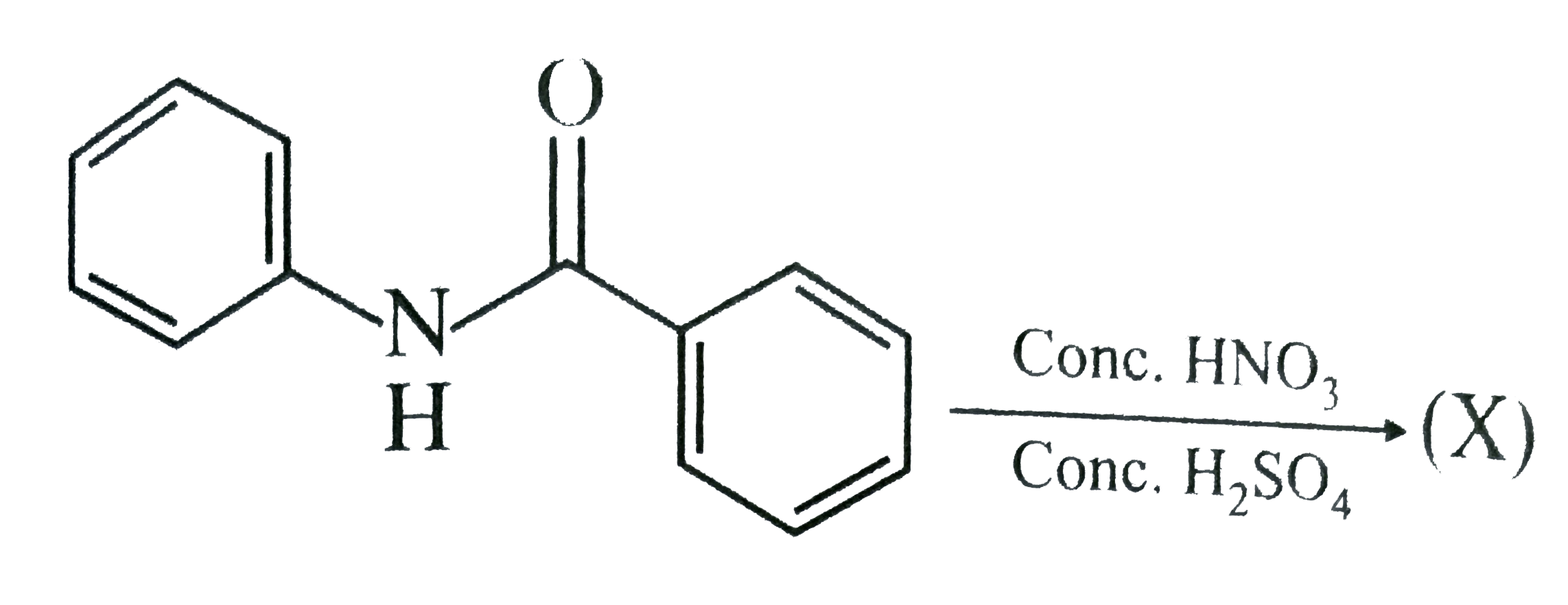
In the following reaction, the structure of the major product (X) is:
View SolutionThe reagent(s) for the following conversion

is/are:
View SolutionThe number of structural isomers for `C_(6)H_(14)` is :
View SolutionThe percentage of p-character in the orbitals forming `p-p` bonds in `P_4` is
View SolutionWhen 20 g of naphthoic acid `(C_(11)H_(8)O_(2))` is dissolved in 50 g of benzene (`K_(f) = 1.72 K "kg" mol^(-1)`) , a freezing point depression of 2K is observed . The van't Hoff factor (i) is :
View SolutionThe value of `log_(10)K` for a reaction `A hArr B` is (Given: `Delta_(f)H_(298K)^(Theta) =- 54.07 kJ mol^(-1)`,
`Delta_(r)S_(298K)^(Theta) =10 JK^(=1) mol^(-1)`, and `R = 8.314 J K^(-1) mol^(-1)`
View SolutionAssertion: Boron always froms covalent bond.
Reason: The small size of `B^(3+)` favours formation of covalent bond.
View SolutionStatement: In water, orthoboric acid behaves as a weak monobasic acid.
Explanation: In water, orthoboric acid as a proton donor.
View Solutionp-Hydroxybenzoic acid has a lower boiling point than o-hydroxybenzoic acid.
o-Hydorxybenzoic acid has intramolecular hydrogen bonding.
View SolutionAssertion (A): Micelles are formed by surfactant molecules above the critical micellization concentration `(CMC)` .
Reason(R): The conductivity of a solution having surfactant molecules decreases sharply at the `CMC` .
View SolutionArgon is used in arc welding because
View SolutionThe shape of `XeO_(3)` molecule is
View Solution`XeF_(4)` and `XeF_(6)` are expected to be
View SolutionChemical reaction involve interaction of atoms and molecules. A large number of atoms/molecules (approximately `6.022xx10^(23)`)are present in a few grams of any chemical compound varying with their atomic/molrcular mass. To handle such a large numbers conveniently, the mole concept was introduced. This concept has implications in diverse areas such as analytical in diverse areas such as analytical chemistry, biochemistry, electrochemistry and radiochemistry. The following example illustrates a typical case, involving chemical/ electrochemical reaction, which requires a clear understanding of the mole concept.
A 4.0 molar aqueous solution of NaCl is prepared and 500 mL of this solution is electrolysed. This leads to the evolution of chlorine gas at one of teh electrodes (atomic mass: Na=23, Hg=200, 1F=96500 coulombs)
The total number of moles of chlorine gas evolved is
View SolutionChemical reaction involve interaction of atoms and molecules. A large number of atoms/molecules (approximately `6.022xx10^(23)`)are present in a few grams of any chemical compound varying with their atomic/molrcular mass. To handle such a large numbers conveniently, the mole concept was introduced. This concept has implications in diverse areas such as analytical in diverse areas such as analytical chemistry, biochemistry, electrochemistry and radiochemistry. The following example illustrates a typical case, involving chemical/ electrochemical reaction, which requires a clear understanding of the mole concept.
A 4.0 molar aqueous solution of NaCl is prepared and 500 mL of this solution is electrolysed. This leads to the evolution of chlorine gas at one of teh electrodes (atomic mass: Na=23, Hg=200, 1F=96500 coulombs)
If cathode is a Hg electrode, the maximum weight(g) of amalgam formed from the solution is
View SolutionChemical reaction involve interaction of atoms and molecules. A large number of atoms/molecules (approximately `6.022xx10^(23)`)are present in a few grams of any chemical compound varying with their atomic/molrcular mass. To handle such a large numbers conveniently, the mole concept was introduced. This concept has implications in diverse areas such as analytical in diverse areas such as analytical chemistry, biochemistry, electrochemistry and radiochemistry. The following example illustrates a typical case, involving chemical/ electrochemical reaction, which requires a clear understanding of the mole concept.
A 4.0 molar aqueous solution of NaCl is prepared and 500 mL of this solution is electrolysed. This leads to the evolution of chlorine gas at one of teh electrodes (atomic mass: Na=23, Hg=200, 1F=96500 coulombs)
The total charge in couloms required to complete the electrolysis
View SolutionMatch the complexes in column I with their properties listed in column II. Indicate your answer by darkening the appropriate bubbles of the `4xx4` matrix given in the ORS.
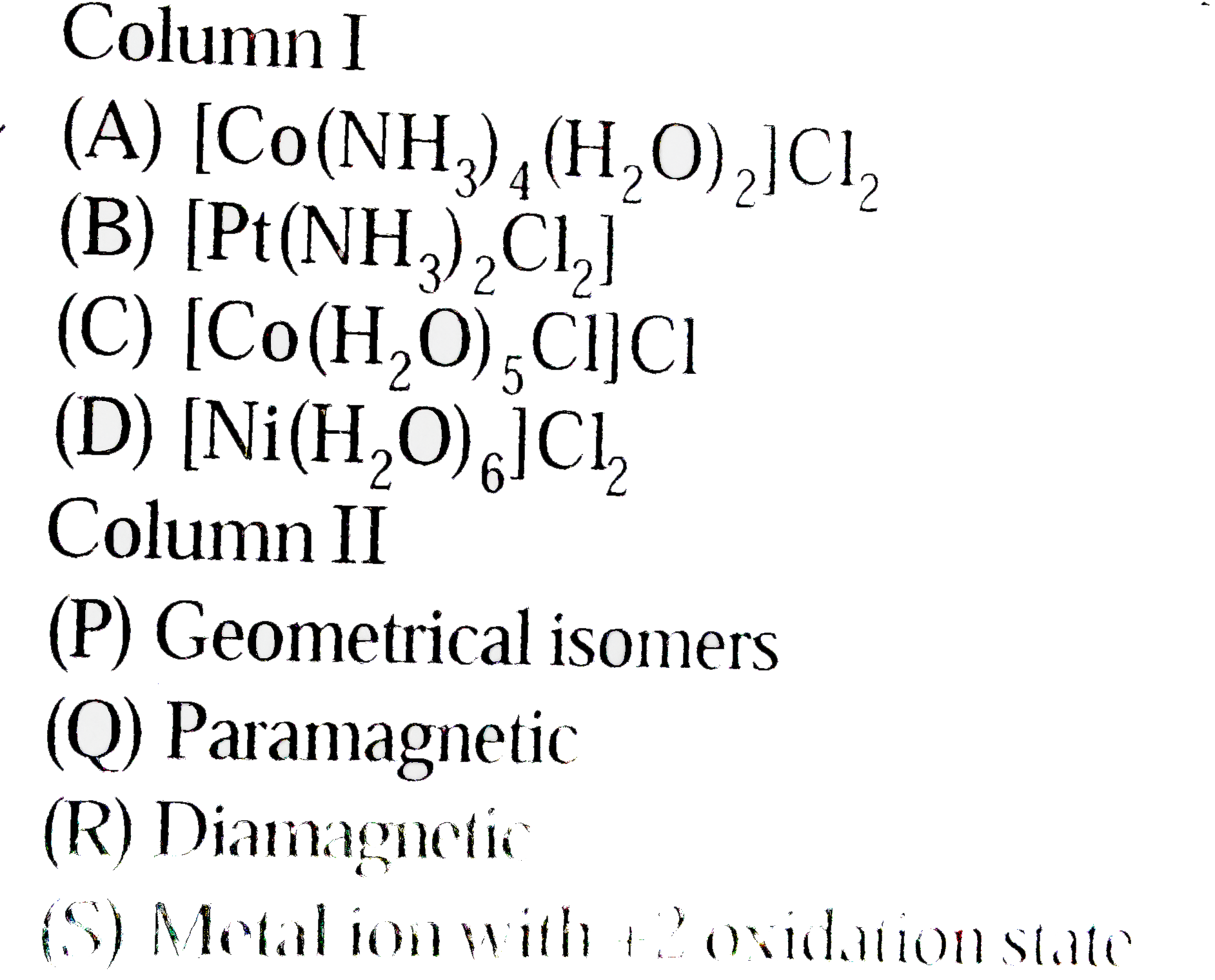
View SolutionMatch the chemical substances in Column `I` with type of polymers/type of bond in Column `II`
`{:(,"Column I",,"Column II"),("A.","Cellulose","p.","Natural polymer"),("B.","Nylon-66","q.","Synthetic polymer"),("C.","Protein","r.","Amide linkage"),("D.","Sucrose","s.","Glycoside linkage"):}`
View SolutionMatch gases under specified condition listed in Column I with their proerties/laws in Column II.

View SolutionHyperconjugation involves overlap of the following orbitals :
View SolutionThe major product of the following reaction is

View SolutionAqueous solution of `Na_(2)S_(2)O_(3)` on reaction with `CI_(2)`, gives
View SolutionNative silver metel froms a water solube, complesx with a dilute aqueous wsolution of `NaCN` in the presence of
View SolutionUnder the same reaction conditions, the intial concentration of `1.386 mol dm^(-3)` of a substance becomes half in `40 s` and `20 s` theough first order and zero order kinetics, respectively.
The ratio `(k_(1)//k_(0))` of the rate constants for first order `(k_(1))` and zero order `(k_(0))` of the reaction is
View Solution`2.5mL` of `(2)/(5)` weak monoacidic base (`K_(b)= 1xx10^(-12)` at `25^(@)C`) is tittrated with `(2)/(15)MHCI` in water at `25^(@)C`. The concentration of `H^(+)` at equivalence point is: `(K_(w)= 1xx10^(-14)at 25^(@)C)`
View SolutionThe correct statements `(s)` about the compound given below is/are:
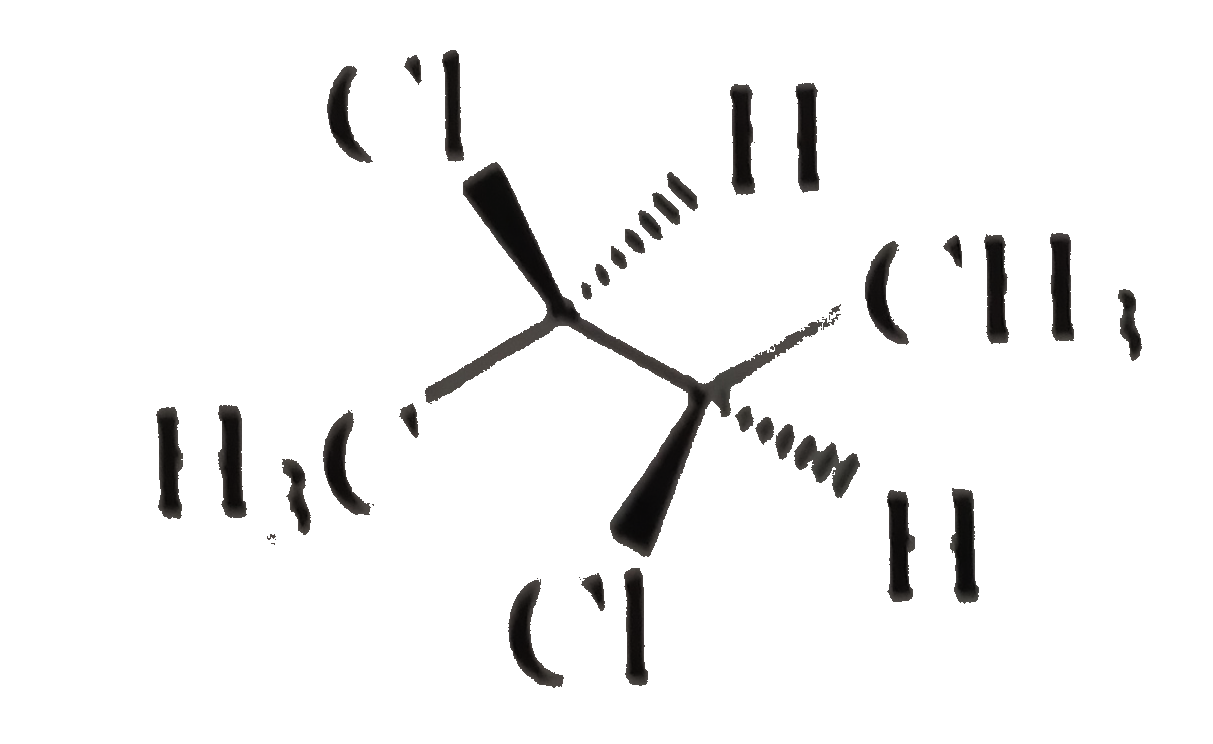
View SolutionThe correct statement(s) concerning the structures E, F and G is/are

View SolutionA solution of colourless salt on boiling with excess `NaOH` produces a non-flammable gas. The gas evolution ceases after sometime upon addition of `Zn` dust to the same solution, the gas evolution restarts. The colourless salt (s) is (are).
View SolutionA gas described by van der Waals equation .
View SolutionAssertion: Bromobenzene upon reaction with `Br_(2)//Fe` gives 1,4-dibromobenzene as the major product
Reason In bromobenzene the inductive effect of the bromo group is more dominant than the mesomeric effect in directing the incoming electrophile .
View SolutionAssertion (A) :` Pb^(+4)` compounds are stronger oxidiising agents than ` Sn^(4+)` compounds .
Reason (R): The higher oxidation states for group `14` elements are more stable for the heavier members of the group due to inert pair effect .
View SolutionStatement : The plot of atomic number ( y -axis ) versus number of neutrons ( x -axis ) for stable nuclei shows a curvature towards x-axis fron the line of ` 45^@` slope as the atomic number is increased .
Explanation : proton -proton electrostatic repulsions begin to overcome attracive forces involving protons and neutrons in heavier nuclides.
View SolutionStatement -1: For every chmical reaction at equilibrium , standard Gidds energy of reaction is zero
Statement-2: At constant temperature and pressure , chemical reactions are spontaneious in the direction of decreasing gibbs energy.
View SolutionIn the following reaction sequence, products I, J, and L are formed. `K` represents a reagent.
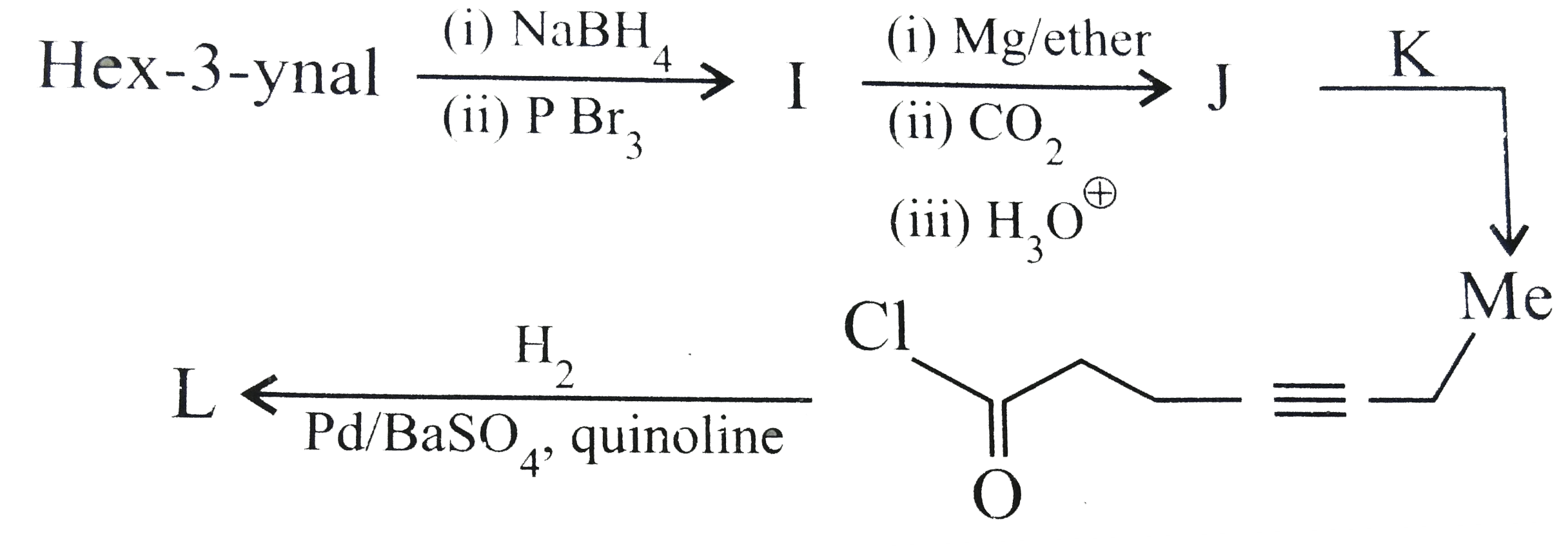
The structures of product `I` is :

The structures of compounds `J` and `K`, respectively, are :
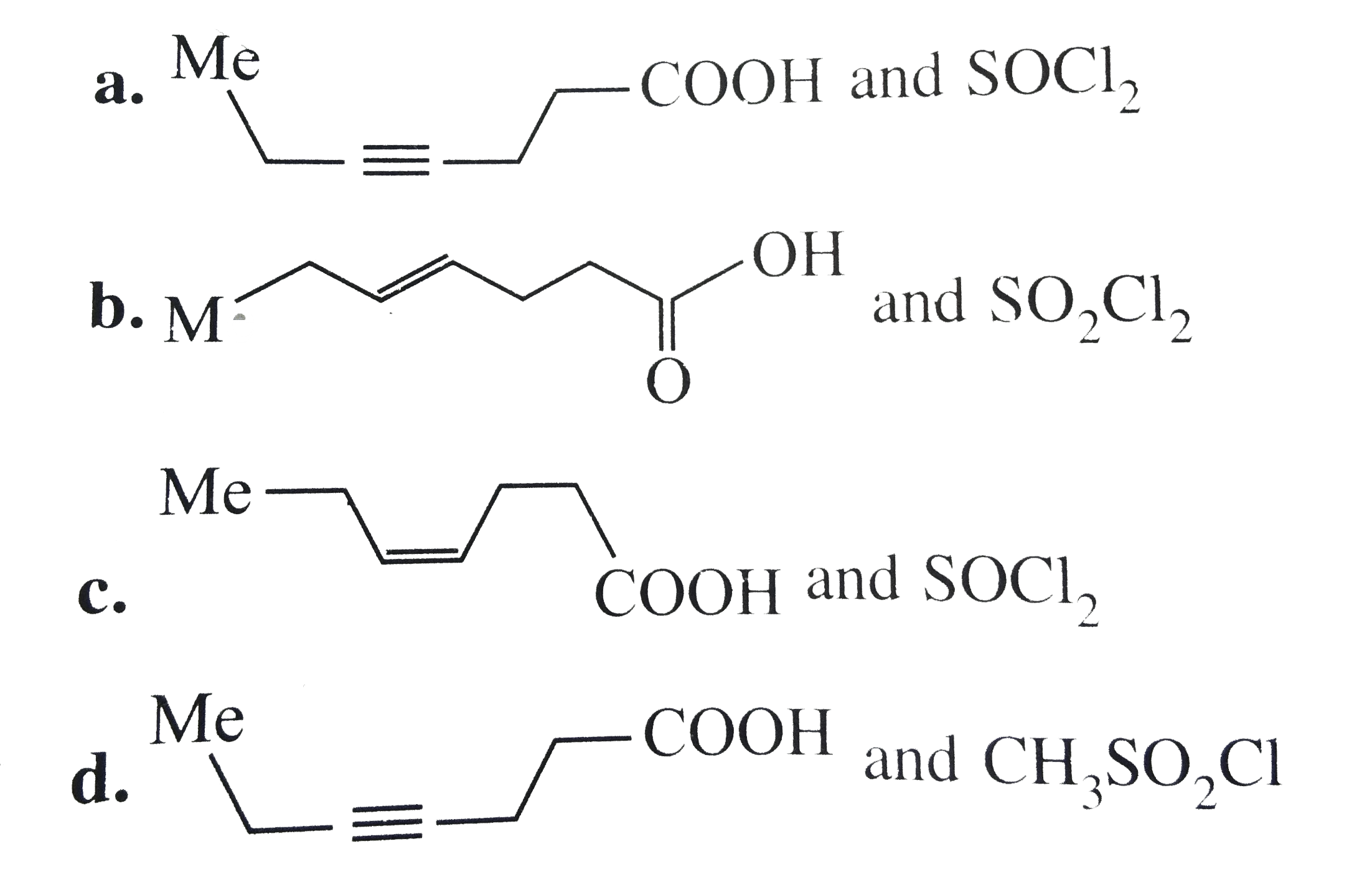
The structure of product `L` is :
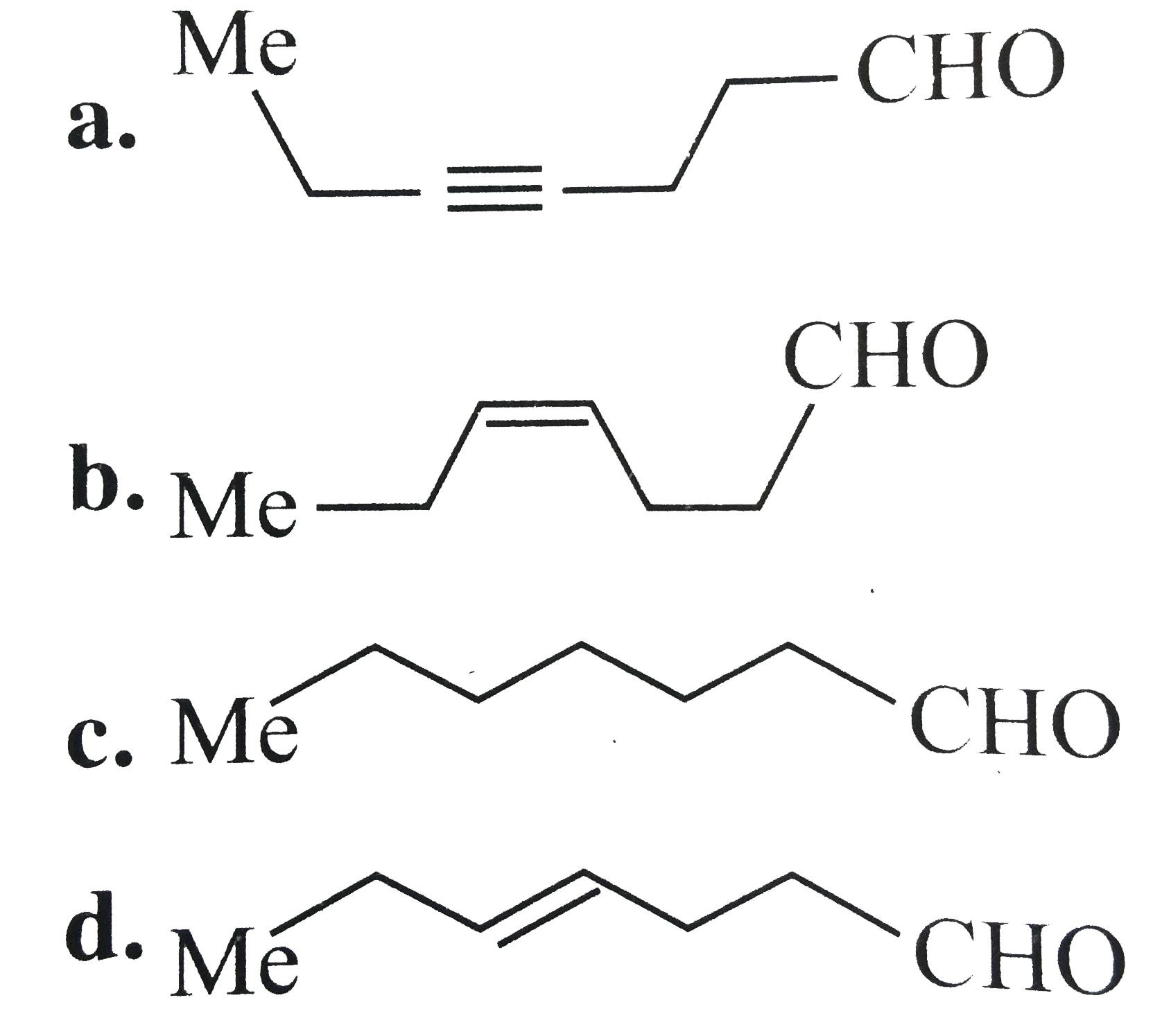
View SolutionIn the following reaction sequence, products I, J, and L are formed. `K` represents a reagent.

The structures of product `I` is :

The structures of compounds `J` and `K`, respectively, are :

The structure of product `L` is :

View SolutionIn the following reaction sequence, products I, J, and L are formed. `K` represents a reagent.

The structures of product `I` is :

The structures of compounds `J` and `K`, respectively, are :

The structure of product `L` is :

View SolutionThere are some deposits of nitrated and phosphates in the earth's crust. Nitrates are more soluble in water. Nitrates are difficult to reduce under laboratory conditions but microbes do it easily. Ammonia forms a large number of complexes with transition metal ions. Hybridisation easily explains the ease of sigma donation capability of `NH_3` and `PH_3`. Phosphine is a flammable gas and is prepared from white phosphorous.
Which of the following statement is correct ?
View SolutionThere are some deposits of nitrated and phosphates in the earth's crust. Nitrates are more soluble in water. Nitrates are difficult to reduce under laboratory conditions but microbes do it easily. Ammonia forms a large number of complexes with transition metal ions. Hybridisation easily explains the ease of sigma donation capability of `NH_3` and `PH_3`. Phosphine is a flammable gas and is prepared from white phosphorous.
Which of the following statement is correct ?
View SolutionThere are some deposits of nitrates and phosphates in the earth's crust. Nitrates are more soluble in water. Nitrates are difficult to reduce under laboratory conditions but microbes do it easily. Ammonia forms a large number of complexes with transition metal ions. Hybridisation easily explains the ease of sigma donation capability of `NH_3` and `PH_3`. Phosphine is a flammable gas and is prepared from white phosphorous.
White phosphorous on reaction with `NaOH` gives `PH_3` as one of the products. This is a.
View SolutionProperties such as boiling point, freezing point and vapour pressure of a pure solvent change when solute molecules are added to get homogeneous solution. These are called colligative properties. Applications of colligative properties are very useful in day-to-day life. One of its examples is the use of ethylene glycol and water mixture as anti-freezing liquid in the radiator of automobiles.
A solution `M` is prepared by mixing ethanol and water. Thus moel fraction of ethanol in the mixture is `0.9`.
Given: Freezing point depression constant of water
`(K_(f)^("water")) = 1.86 K kg mol^(-1)`
Freezing point depression constant of ethanol
`(K_(f)^("ethanol")) = 2.0 K kg mol^(-1)`
Boiling point elevation constant of water
`(K_(b)^("water")) = 0.52 K kg mol^(-1)`
Boiling point elevation constant of ethanol
`(K_(b)^("ethanol")) = 1.2 K kg mol^(-1)`
Standard freezing point of water `= 273 K`
Standard freezing point of ethanol `= 155.7K`
Standard boiling point of water `= 373 K`
Standard boiling point of ethanol `= 351.5 K`
vapour pressure of pure water `= 32.8 mm Hg`
Vapour pressure of pure ethanol `= 40 mm Hg`
Molecualr weight of water `= 18 g mol^(-1)`
Molecular weight of ethanol `= 46 g mol^(-1)`
In asweering the following questions, consider the solutions to be ideal dilute solutions and solutes to be non-volatile and non-dissociative.
The freezing point of the solution `M` is :
View SolutionProperties such as boiling point, freezing point and vapour pressure of a pure solvent change when solute molecules are added to get homogeneous solution. These are called colligative properties. Applications of colligative properties are very useful in day-to-day life. One of its examples is the use of ethylene glycol and water mixture as anti-freezing liquid in the radiator of automobiles.
A solution `M` is prepared by mixing ethanol and water. Thus moel fraction of ethanol in the mixture is `0.9`.
Given: Freezing point depression constant of water
`(K_(f)^("water")) = 1.86 K kg mol^(-1)`
Freezing point depression constant of ethanol
`(K_(f)^("ethanol")) = 2.0 K kg mol^(-1)`
Boiling point elevation constant of water
`(K_(b)^("water")) = 0.52 K kg mol^(-1)`
Boiling point elevation constant of ethanol
`(K_(b)^("ethanol")) = 1.2 K kg mol^(-1)`
Standard freezing point of water `= 273 K`
Standard freezing point of ethanol `= 155.7K`
Standard boiling point of water `= 373 K`
Standard boiling point of ethanol `= 351.5 K`
vapour pressure of pure water `= 32.8 mm Hg`
Vapour pressure of pure ethanol `= 40 mm Hg`
Molecualr weight of water `= 18 g mol^(-1)`
Molecular weight of ethanol `= 46 g mol^(-1)`
In asweering the following questions, consider the solutions to be ideal dilute solutions and solutes to be non-volatile and non-dissociative.
The vapour pressure of the solution `M` is:
View SolutionProperties such as boiling point, freezing point and vapour pressure of a pure solvent change when solute molecules are added to get homogenous solution. These are called colligative properties. Application of colligative properties are very useful in day-to-day life. One of its example is the use of ethylene glycol and water mixture as anti-freezing liquid in the radiator of automobiles.
A solution M is prepared by mixing ethanol and water. The mole fraction of ethanol in the mixture is `0.9`.
Given : Freezing point depression constant of water `(K_(f)^("water")) = 1.86 K "mol"^(-1)`
Freezing point depression constant of ethanol `(K_(f)^("ethonal")) = 2.0 K kg "mol"^(-1)`
Boiling point elevation constant of water `(K_(b)^("water")) = 0.52 K kg "mol"^(-1)`
Boiling point elevation constant of ethanol `(K_(b)^("ethonal")) = 1.2 K kg mol^(-1)`
Standard freezing point of water `= 273 K`
Standard freezing point of ethonal `= 155.7 K`
Standard boiling point of water `= 373 K`
Standard boiling point of ethanol `= 351.5 K`
Vapour pressure of pure water `= 32.8 mm Hg`
Vapour pressure of pure ethonal `= 40 mm Hg`
Molecular weight of water `= 18 g "mol"^(-1)`
Molecular weight of ethonal `= 45 g"mol"^(-1)`
In answering the following questions, consider the solution to be ideal ideal solutions and solutes to be non-volatile and non-dissociative.
Water is added to the solution M such lthat the molecules fraction of water in t he solution becomes `0.9`. The boiling point of this solution is :
View SolutionThe correct stability order for the following species is

View SolutionCellulose upon acetylation with excess acetic anhydride/`H_(2)SO_(4)` (catalytic) gives cellulose triacetate whose structure is
View SolutionIn the following reactions sequences, the correct structures of E,F and G are

( * implies `.^(13)C` labelled carbon)
View SolutionAmong the following , the coloured compound is
View SolutionBoth `[Ni(CO)_(4)]` and `[Ni(CN)_(4)]^(2-)` are diamagnetic. The hybridisations of nickel in these complexes respectively, are
View SolutionThe IUPAC name of `[Ni (NH_(3))_(4)] [NiCl_(4)]` is
View SolutionElectrolysis of dilute aqueous NaCl solution was carried out by passing 10 milli ampere current. The time required to liberate 0.01 mol of `H_(2)` gas at the cathode is (1 Faraday=96500 C `"mol"^(-1)`)
View SolutionAmong the following, which surfactant will form micelles in aqueous solution at the lowest molar concentration at ambient conditions?
View SolutionThe solubility product constant `(K_(sp))` of salts of types `MX, MX_(2)`, and `M_(3)X` at temperature `T` are `4.0 xx 10^(-8), 3.2 xx 10^(-14)`, and `2.7 xx 10^(-15)`, respectively. The solubilities of the salts at temperature `T` are in the order
View SolutionStatement I: Aniline on reaction with ` NaNO_2HCl` at `0^@C` followed by coupling with `beta`-naphthol gives a dark blue coloured precipitate.
Statement II: The colour of the compound formed in the reaction of aniline with `NaNO_2//HCl` at ` 0^@C` followed by coupling with `beta`-naphthol is due to extended conjugation.
View SolutionStatement I `[Fe(H_(2)O)_(5)NO]SO_(4)` is paramagnetic
Statement II The Fe in `[Fe(H_(2)O)_(5)NO]SO_(4)` has three unpaired electrons .
View SolutionStatement I The geometrical isomer of the complex `[M(NH)_(3))_(4)CI_(2)]` are optically inactive
Satement II Both geometrical isomers of the complex `[M(NH_(3))_(4)CI_(2)]` possess axis of symmetry .
View SolutionStatement-1: There is a natural asymmetry between work to heat and converting heat to work .
Statement-2: No process is possible in which the sole result is the absorption of heat from a reservoir and its complaete conversion into work .
View SolutionA tertiary alcohol (H) upon acid-catalysed dehydration gives a product (I). Ozonolysis of (I) leads to compounds (J) and (K). Compound (J) upon reaction with KOH gives benzyl alcohol and a compound (L), whereas (K) on reaction with KOH gives only (M).

Compound (H) is formed by the reaction of:
View SolutionA tertiary alcohol (H) upon acid-catalysed dehydration gives a product (I). Ozonolysis of (I) leads to compounds (J) and (K). Compound (J) upon reaction with KOH gives benzyl alcohol and a compound (L), whereas (K) on reaction with KOH gives only (M).
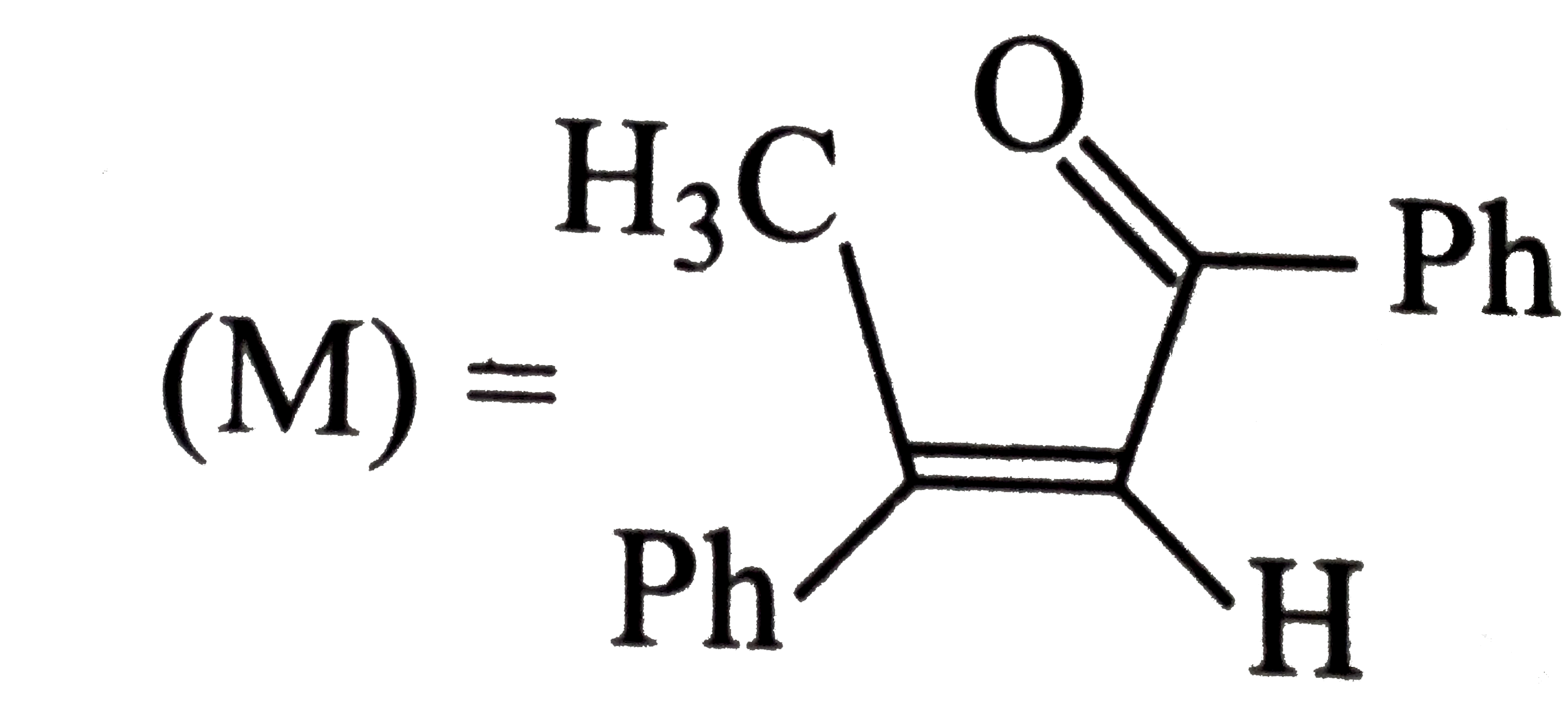
The structurer of compound (I) is:
View SolutionA tertiary alcohol (H) upon acid-catalysed dehydration gives a product (I). Ozonolysis of (I) leads to compounds (J) and (K). Compound (J) upon reaction with KOH gives benzyl alcohol and a compound (L), whereas (K) on reaction with KOH gives only (M).
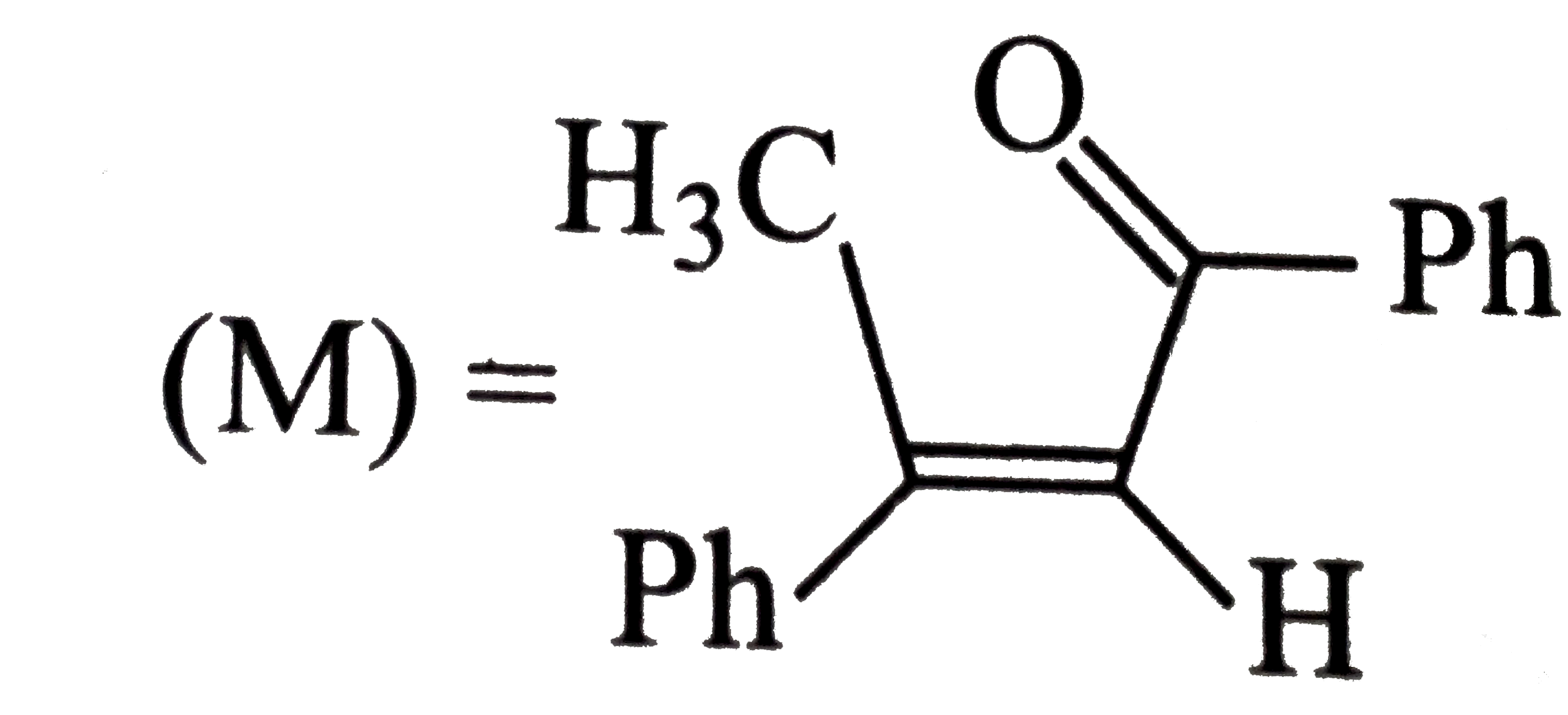
The structures of compounds (J), (K), and (L), respectively, are:
View SolutionIn a hexaonal system system of cycstals, a frequently encountered arrangement of atoms is described as a hexagonal prism. Here, the top and bottom of the cell are refular hexagons, and three atoms are sandwiched in between them. A space-cilling model of this structure, called hexagonal close-paked is constituted of a sphere on a flat surface surrounded in the same plane by six identical spheres as closely as possible. Three spherres are then placed overt the first layer so that they toych each other and represent the second layer so that they toych each other and present the second layer. Each one of the three spheres touches three spheres of the bottom layer. Finally, the second layer is convered with a third layer identical to the bottom layer in relative position. Assume the radius of every sphere to be `r`.
The number of atom in this hcp unit cell is
View SolutionIn a hexaonal system system of cycstals, a frequently encountered arrangement of atoms is described as a hexagonal prism. Here, the top and bottom of the cell are refular hexagons, and three atoms are sandwiched in between them. A space-cilling model of this structure, called hexagonal close-paked is constituted of a sphere on a flat surface surrounded in the same plane by six identical spheres as closely as possible. Three spherres are then placed overt the first layer so that they toych each other and represent the second layer so that they toych each other and present the second layer. Each one of the three spheres touches three spheres of the bottom layer. Finally, the second layer is convered with a third layer identical to the bottom layer in relative position. Assume the radius of every sphere to be `r`.
The voume of this hcp unit cell is
View SolutionIn a hexaonal system system of cycstals, a frequently encountered arrangement of atoms is described as a hexagonal prism. Here, the top and bottom of the cell are refular hexagons, and three atoms are sandwiched in between them. A space-cilling model of this structure, called hexagonal close-paked is constituted of a sphere on a flat surface surrounded in the same plane by six identical spheres as closely as possible. Three spherres are then placed overt the first layer so that they toych each other and represent the second layer so that they toych each other and present the second layer. Each one of the three spheres touches three spheres of the bottom layer. Finally, the second layer is convered with a third layer identical to the bottom layer in relative position. Assume the radius of every sphere to be `r`.
The empty space in this hcp unit cell is
View Solution
CHEMISTRY questions and complete solutions for chapter JEE ADVANCED of JEE ADVANCED PREVIOUS YEAR of Class 12
All Exercises from JEE ADVANCED PREVIOUS YEAR Class 12 CHEMISTRY JEE ADVANCED
- CHEMISTRY
- CHEMISTRY SECTION - I : Single correct Answer Type
- CHEMISTRY SECTION - II : Multiple Correct Answer Type
- CHEMISTRY SECTION - III : Integer Answer Type
- CHEMISTRY SECTION - IV : Matric Match Type
- MULTIPLE CHOICE QUESTIONS
- PART II : CHEMISTRY (SECTION -1)
- PART II : CHEMISTRY (SECTION -2)
- PART II : CHEMISTRY (SECTION -3)
- PART II : CHEMISTRY (SECTION 1)
- PART II : CHEMISTRY (SECTION 2)
- PART II : CHEMISTRY (SECTION 3)
- PART II :CHEMISTRY (SECTION 2)
- PART II :CHEMISTRY (SECTION 3)
- PART II: CHEMISTRY (Section -1):(One or more options correct type)
- PART II: CHEMISTRY (Section -2):(Paragraph Type)
- Part II: CHEMISTRY (Section 1)
- Part II: CHEMISTRY (Section 2)
- Part II: CHEMISTRY (Section 3) Paragraph 1
- Part II: CHEMISTRY (Section 3) Paragraph 2
- PART II: CHEMISTRY Section-3:(Matching List Type)
- PART-2 CHEMISTRY SECTION -1 (ONLY ONE OPTION CORRECT TYPE)
- SECTION - 3 (MATCHING LIST TYPE)
- Section - I Single correct Answer Type
- Section - I (Single correct question )
- Section - II (Multiple correct Answer Type Questions)
- Section - II (Multiple correct choice type)
- Section - III (Paragraph type)
- Section - IV (Integer Answer Type)
- SECTION -2 COMPREHENSION TYPE
- SECTION 1
- SECTION 2
- SECTION 3 PARAGRAPH
- SECTION I
- Section I : Single Correct Answer Type
- SECTION II
- Section II : Paragraph Type
- SECTION III
- Section III : Multiple Correct Answer(s) Type
- SECTION- 1 (ONE OR MORE THAN ONE OPTIONS CORRET TYPE)
- Section-1
- Section-2
- Section-3
- SECTION-I (Single Correct Choice Type )
- Section-I (single correct choice type)
- Section-II (Integer type)
- SECTION-II (Multiple Correct Choice Type )
- SECTION-II(Multiple Correct Choice Type )
- Section-III (Paragraph type )
- SECTION-III (Comprehension Type )
- SECTION-III (Matrix-Match Type )
- SECTION-IV (Integer Answer Type )
- Section-IV (integer type)
- Section-IV (Matrix type)
- SECTION-IV(Matrix-Match Type )